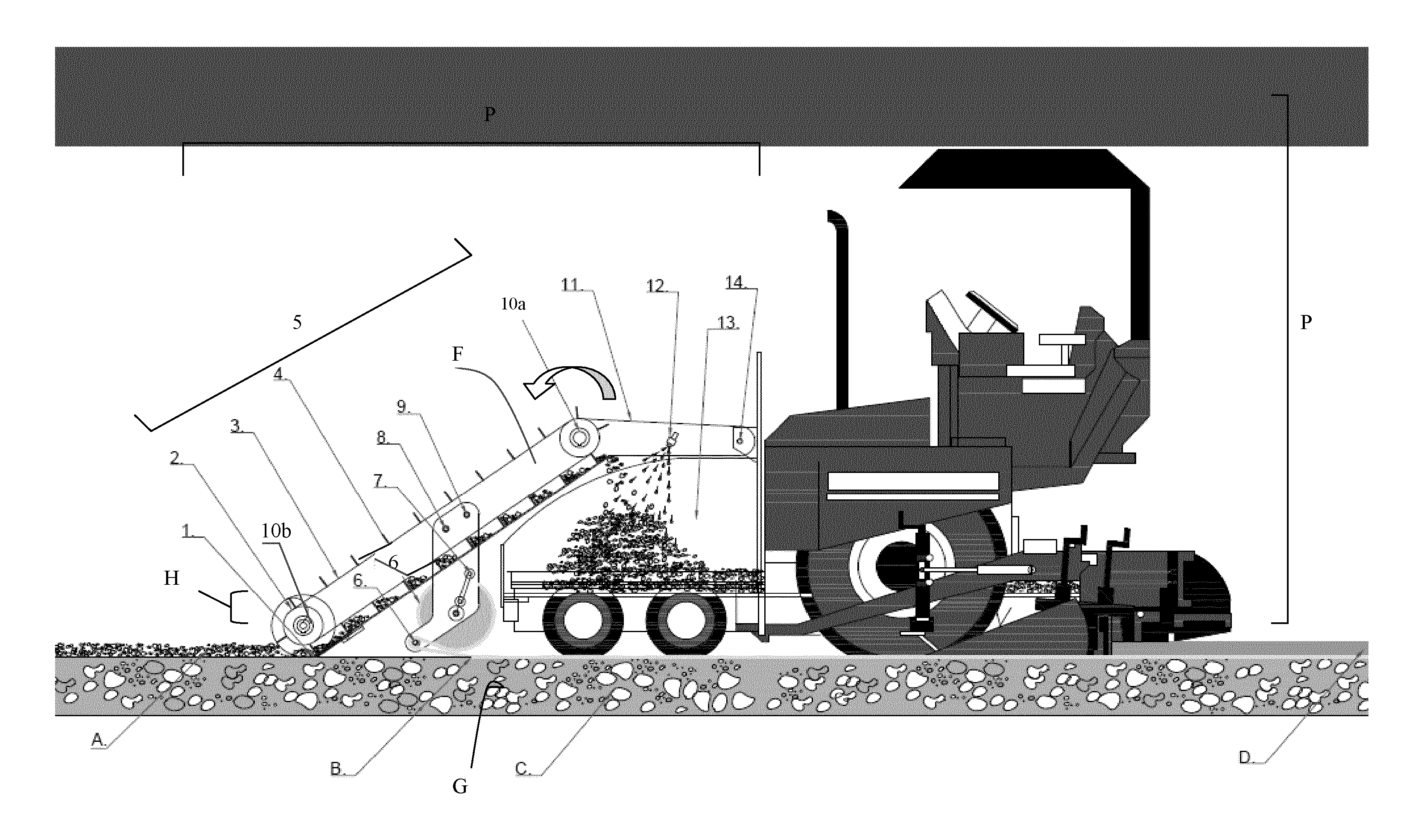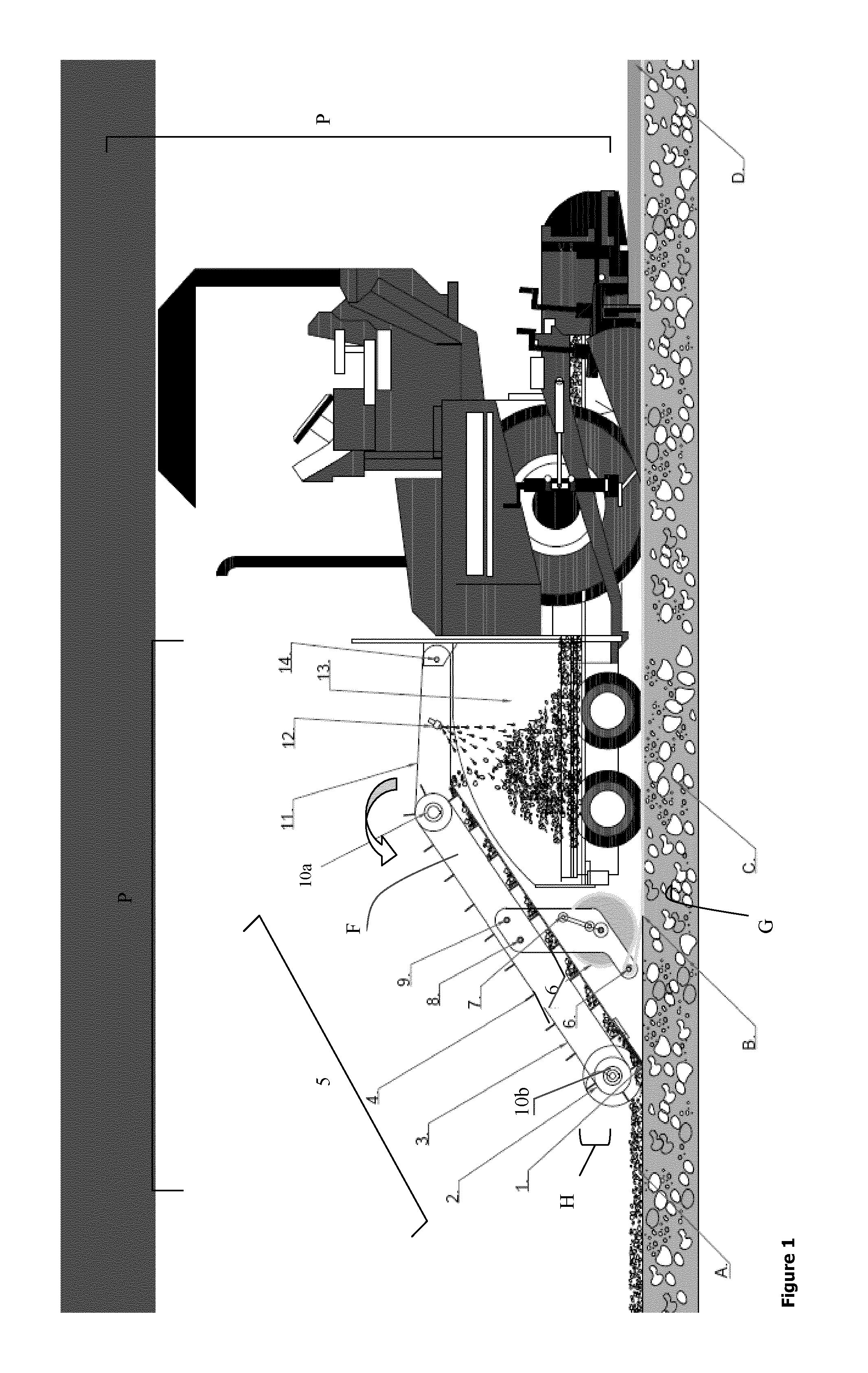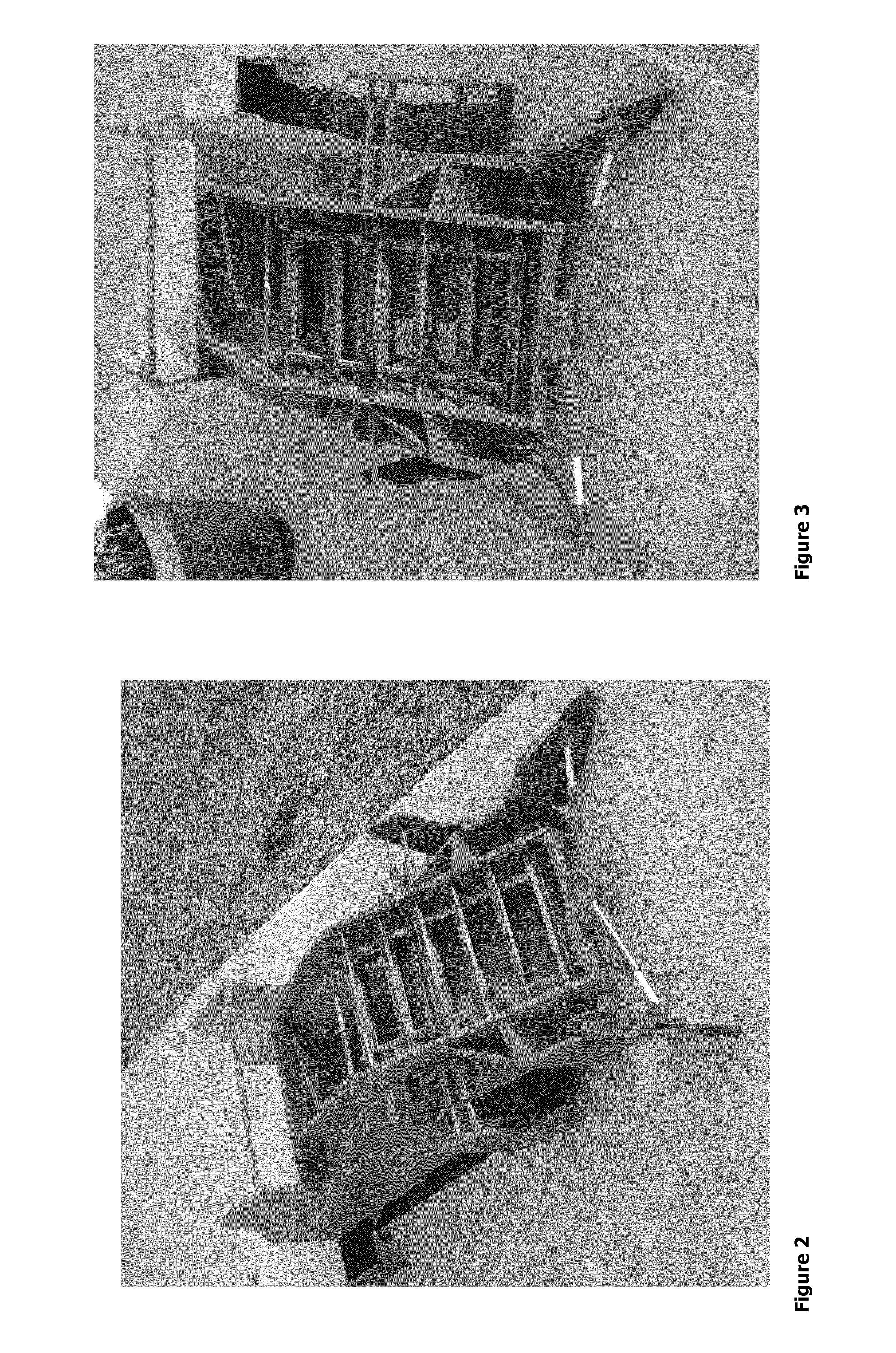Road surfaces deteriorate over time as a result of continuous damage resulting from traffic, and more significantly, from environmental stresses, which include thermal stresses such as freeze thaw cycles and cold and heat extremes, together with natural deterioration resulting from aging and crushing in-situ.
For instance, some clay soils can shrink and swell depending upon
moisture content, whereas soils with excessive fines may be susceptible to
frost heave in freezing areas.
Weathering and heavy use can loosen chippings and cause road surfaces to become worn, which increases the risk of vehicle skidding.
If the water-resistant protective
road surface dressing becomes compromised or becomes loosened, further problems, such as
cracking and potholes, are likely to occur, depleting and / or destroying the integrity of the structural
layers through downward
moisture ingress.
Ponding is often caused by poor drainage, usually because the drains are blocked or are not fit for purpose, or because the road does not have sufficient slope or camber to allow water to runoff.
If left untreated, surface
ponding can widen cracks and contribute to the development of potholes and other damage.
Spillages, residues from motor engines and farm
effluent are also problematic being particularly aggressive to bituminous surfaces and over time can degrade the friction course, making the surface more susceptible to the types of damage discussed above.
Water infiltration causes the most serious damage, particularly in cases where drainage is poor.
However, if the drainage
system is poor or not operating correctly, the water can infiltrate and rests within the road, where repeated vehicle loading can quickly lead to failure as the vehicle load is no longer transferred correctly to the underlying supporting
subgrade.
In the presence of water and movement of the aggregate, the binder film on the aggregate particles can become compromised and water can contact with the underlying structural layers which are often of unbound or hydraulically bound aggregate composition.
The broken down binder is stripped off the aggregate particles over time and the protective impervious layer is substantially washed away rendering the surface more prone to water infiltration.
When water enters a road structure,
water damage is initially caused by pressure from vehicles passing over the road putting stress on the water present in the road pavement.
This pressure forces the water further into the core of the road matrix where more damage is caused.
The water infiltrates into the structural layers and even the
subgrade layer below the road structure weakening the entire road structure.
Furthermore, once the
surface integrity has been compromised and water enters the road structure, over time the
moisture content of the road structure increases with a simultaneous reduction of the road strength, either of individual layers or as a
composite structure.
The process eventually leads to weakening and failure of the road.
This involves freezing from the surface downwards, which results in water being drawn up from the lower levels.
Water that has entered the road pavement and is subject to the process of freezing (expansion) and thawing during the winter also brings about the swift failure of the road pavement.
Likewise, if water resting on the surface dressing is not prevented from entering the road or pavement matrix by means of an impervious binder course (for example, bitumen based surface dressing) or a completely impervious
bond coat, the water will weaken the road structure and may eventual lead to road failure of the type discussed above.
Such systems are not suitable for lifting roads milled to greater depths, for example, 100-300 mm, as are used in cold road recycling.
Such milled roadbeds are typically full of hard rock and lumps and cannot be easily lifted by existing reprofiling devices.
Operation of the material feed
system, can have significant effects on overall construction quality and thus long-term pavement performance.
Furthermore, the hopper should never be allowed to empty during paving as this can results in the leftover cold,
large aggregate in the hopper sliding onto the conveyor in a concentrated
mass and then being placed on the mat without mixing with any hot or fine aggregate.
Many of the known apparatuses for cold road recycling are large, high cost machines which are inherently unsuitable for smaller regional, local and
rural roads.
The in situ process is extremely efficient, however, many roads are inherently unsuitable for in-situ cold recycling using sizeable cold recycling trains, for example, where serve damage to the subgrade has occurred, poor access, smaller country roads, or
heavy traffic flow.
The drawback of the in-
plant method mainly arise from a large increase in cost and jobtime as materials have to be hauled from site to the treatment
plant and back, rather than utilising the
one pass methods facilitated by cold recycling trains.
As discussed above, hot mix road recycling trains for recycling
asphalt and
wearing course bituminous macadam have been available for quite some time, but are large and expensive machines and involve high cost operations and are generally only suitable for wide primary road and motorway type projects covering large areas.
Such trains are not at all suited to smaller regional and local roads which have not been designed and constructed to a specific
design specification.
Such roads can vary greatly in thickness and may be built up from layers of pit run, gravel, broken stone or hydraulically bound macadam and so simply hot thin dressing replacement is usually not possible or troublesome.
Where road or pavement drainage is poor, for example, on regional, local or indeed rural
road networks (where drainage of the road surface generally involves poorly maintained ditches adjacent to the roadway) the problems are compounded.
Generally, cost and indeed access can limit the type of repair work that be carried out.
As it would be difficult and costly to build new roads in these situations, such roads are typically maintained by periodic use of subsequent layers of surface dressing applied using simple paving devices, rather than correction of the fundamental factors leading to the problems.
Excessive water infiltration can result in lifting of this top dressing leading to a failed friction course where the required repairs have to be repeatedly and regularly implemented.
However, for the reasons described above, cold in-situ recycling or indeed cold in-
plant recycling may be extremely costly, where appropriate at all.
As mentioned above, the size and oftentimes cost of these powerful machines is prohibitive for their use on small or unstable regional or country roads or paths.
Therefore, where the structural improvement offered by the incorporation of a geomaterial is desired, the process is slow, time-consuming and thus expensive, as the membrane can only be laid when the old road surface is completely removed.
This means that there are often disruptive long-term closures while these additional roadworks are taking place.
The
system is said to be useable with a repaver device; however, neither devices would suitable for cold carrying out recycling process at cold
rehabilitation depths.
 Login to View More
Login to View More 


